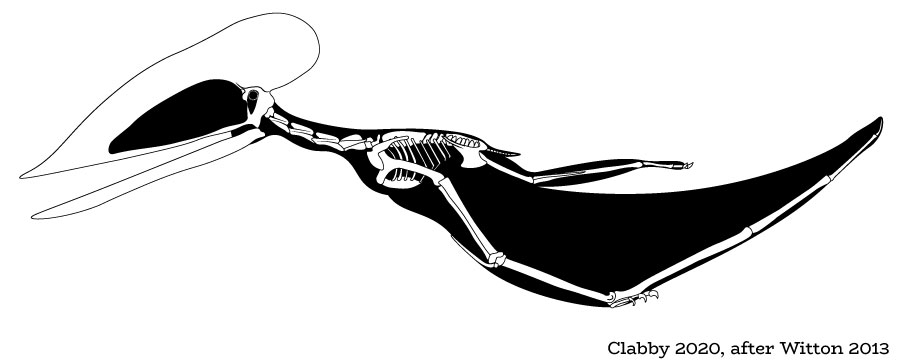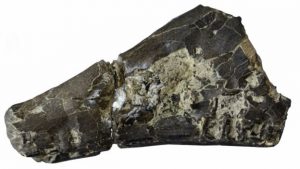Meaning
Slanting beak from the Isle of Wight
Wingspan
Unknown
Classification
Pterosauria Kaup, 1834
Pterodactyloidea Plieninger, 1901
Tapejaridae Kellner, 1989
Wightia declivirostris Martill et al 2020
Locations
Yaverland
Tapejarids are believed to have been arboreal, living in trees, so it’s possible that Wightia did too, living an omnivorous lifestyle.
Tapejarids are known for their head crests, which can be quite spectacular, presumably for display. Unfortunately, none was found on Wightia, but it’s not unreasonable to believe that is had one too.
The know material comprises of fused partial premaxillae of both sides anterior to the nasoantorbital fenestra but lacking the distal tip. The specimen is partially crushed, but is three dimensional posteriorly and seems laterally compressed in caudal view. The specimen displays the downturned occlusal margin of the premaxilla that characterises the Tapejaridae, with a down turn angle of ~12°. The lateral margins are smooth and there are small (less than 1 mm diameter) foramina lying just dorsal of the occlusal margin (ventral border).
The occlusal surface is gently sulcate with rounded borders, and displays just a few small, oval foramina arranged in irregular clusters of three or four foramina. The dorsal surface is smoothly rounded and defines a slightly concave profile in lateral view. The bone wall is exceptionally thin, with a maximum thickness of 0.61 mm with no obvious thickening in the corners. Under the microscope, the bone of the lateral margins is covered with numerous closely-spaced micro-pores some of which are circular or slightly oval, or are more elongate and slightly meandering anteriorly and dorsally, whereas more ventral and posterior surfaces have a ripple-like surface texture. Projection of the dorsal and ventral margins until they meet to form a tip suggests this is a long-snouted tapejarid
Material is rare, so please report it if you find some…
Martill, D. M.; Green, M; Smith, Roy; Jacobs, M; Winch, J. 2020. First tapejarid pterosaur from the Wessex Formation (Wealden Group: Lower Cretaceous, Barremian) of the United Kingdom. Cretaceous Research: 104487. doi:10.1016/j.cretres.2020.104487


